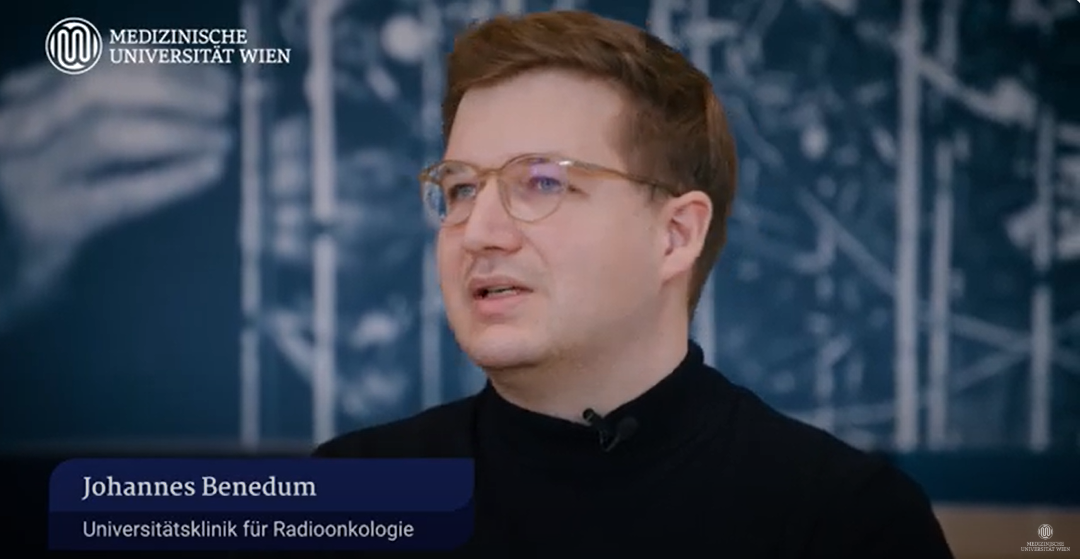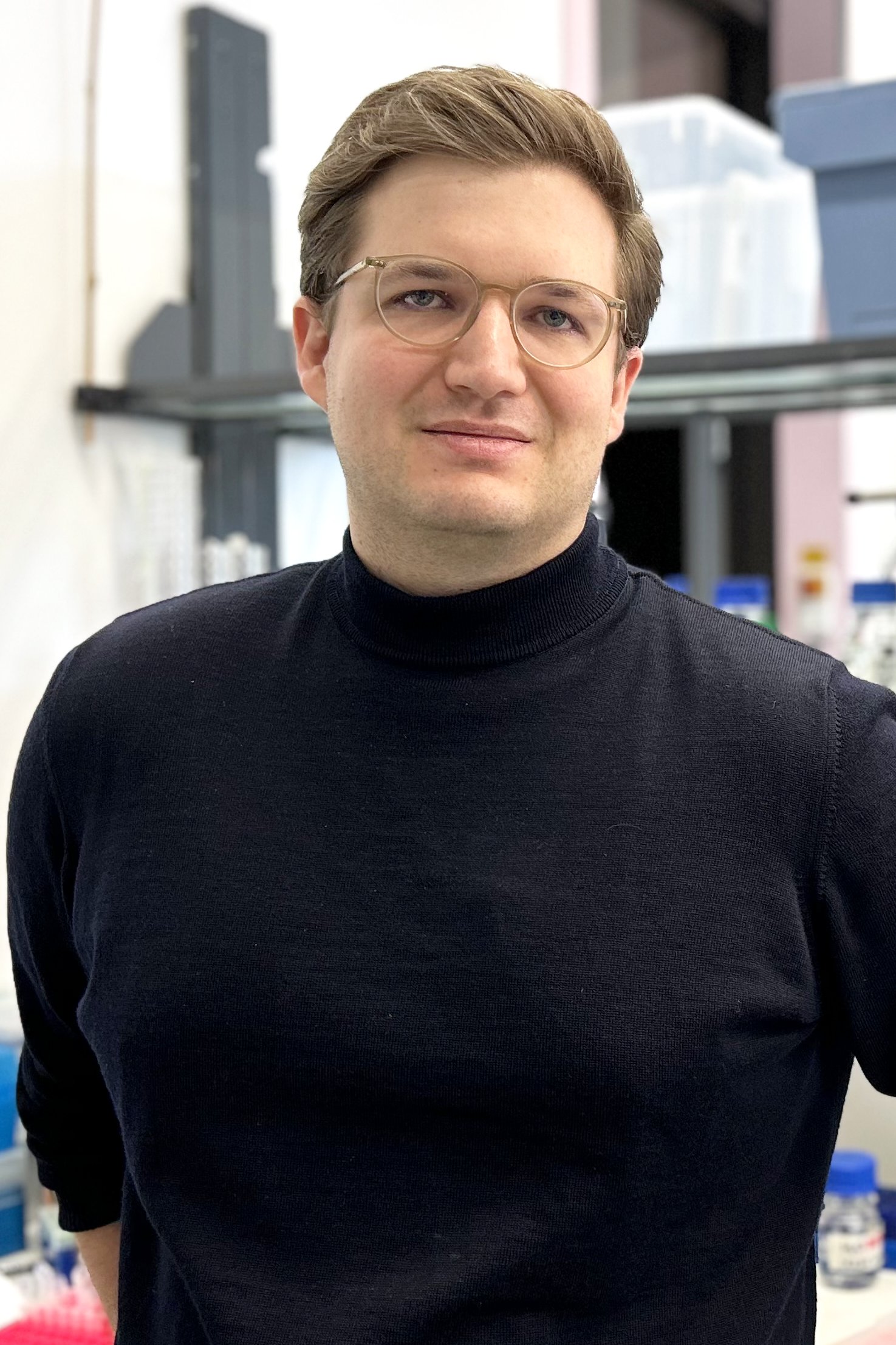
After activation, data will be sent to YouTube. Further information here: Data protection
English subtitles on Youtube available: click on the gear icon and select “Untertitel” – “English”
Johannes Benedum, MSc

MedUni Wien RESEARCHER OF THE MONTH December 2024
Transcription of protein-coding genes into mRNA is carried out by the enzymatic protein complex RNA polymerase II (Pol II). Various effectors bind to this complex and act cooperatively and redundantly to adjust specific transcriptional programs precisely. These effectors influence the chromatin structure, regulate the activity of Pol II or modify RNA.
The paralogous proteins DIDO3 and PHF3 are involved in this fine-tuning of gene expression [3], particularly in the elongation of transcription [4]. However, their exact functions and mechanism still need to be fully understood. Both proteins possess a SPOC domain (Spen Paralogue and Orthologue C-terminal domain) that interacts with the C-terminal domain of Pol II [3].
The two proteins form a macromolecular complex via the common platform of Pol II. Within this complex, DIDO3 anchors Pol II to chromatin, while PHF3 links Pol II to factors that modify RNA [1]. The results show that PHF3 and DIDO3 can link the transcriptional machinery to regulators involved in both transcription and co-transcriptional processes via their SPOC domains. The study thus sheds light on an important regulatory mechanism of gene expression and shows that this mechanism is particularly relevant in neuronal development [1].
Selected Literature
-
Benedum, J., Franke, V., Appel, L. M., Walch, L., Bruno, M., Schneeweiss, R., ... & Slade, D. (2023). The SPOC proteins DIDO3 and PHF3 co-regulate gene expression and neuronal differentiation. Nature Communications, 14(1), 7912.
-
Appel, L. M., Benedum, J., Engl, M., Platzer, S., Schleiffer, A., Strobl, X., & Slade, D. (2023). SPOC domain proteins in health and disease. Genes & Development.
-
Appel, L. M., Franke, V., Benedum, J., Grishkovskaya, I., Strobl, X., Polyansky, A., ... & Slade, D. (2023). The SPOC domain is a phosphoserine binding module that bridges transcription machinery with co-and post-transcriptional regulators. Nature Communications, 14(1), 166.
-
Appel, L. M., Franke, V., Bruno, M., Grishkovskaya, I., Kasiliauskaite, A., Kaufmann, T., ... & Slade, D. (2021). PHF3 regulates neuronal gene expression through the Pol II CTD reader domain SPOC. Nature Communications, 12(1), 6078.
-
Fütterer, A., de Celis, J., Navajas, R., Almonacid, L., Gutiérrez, J., Talavera-Gutiérrez, A., ... & Martinéz-A, C. (2017). DIDO as a switchboard that regulates self-renewal and differentiation in embryonic stem cells. Stem cell reports, 8(4), 1062-1075.